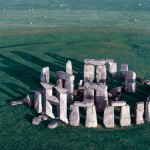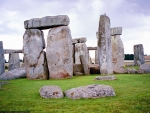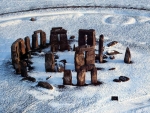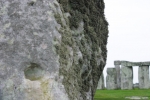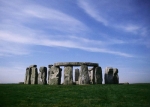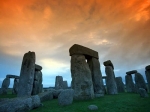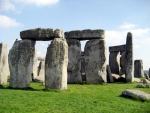Stonehenge-Wonder of the World
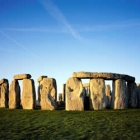

Stonehenge was produced by a culture that left no written records. Many aspects of Stonehenge remain subject to debate. This multiplicity of theories, some of them very colorful, is often called the mystery of Stonehenge.
The outside circle of Stonehenge includes 17 enormous upright trimmed stones its historical significance called Sarsen. Some of these stones paired with a lintel over the top. This circle is about 30 meters (100 feet) in diameter, and, stands in height about 5 meters (16 feet).A great number of historians agreed that construction of Stonehenge have been taken place in three phases.
Stonehenge 1
The first Stonehenge was a large earthwork comprising a ditch, bank, and the Aubrey holes, all probably built around 3100 BC. They form a circle about 284 feet in diameter. Excavations have human bones in some of the chalk filling, but the holes themselves were probably made, not for the purpose of graves, but as part of the religious ceremony. Shortly after this stage Stonehenge was abandoned, left untouched for over 1000 years.
Stonehenge 2
The second and most dramatic stage of Stonehenge started around 2150 BC. Some 82 bluestones from the Preseli Mountains, in south-west Wales were transported to the site. It is thought these stones, some weighing 4 tons each were dragged on rollers and sledges to the headwaters on Milford Haven and then loaded onto rafts. The final stage of the journey was mainly by water, down the river Wylye to Salisbury, then the Salisbury Avon to west Amesbury. This astonishing journey covers nearly 240 miles.
Stonehenge 3
The third stage of Stonehenge, about 2000 BC, saw the arrival of the Sarsen stones, which were almost certainly brought from the Marlborough Downs near Avebury, in north Wiltshire, about 25 miles north of Stonehenge. The largest of the Sarsen stones transported to Stonehenge weigh 50 tones and transportation by water would have been impossible, the stones could only have been moved using sledges and ropes. Modern calculations show that it would have taken 500 men using leather ropes to pull one stone, with extra 100 men needed to lay the huge rollers in front of the sledge.
Current Consensus
The current consensus is that Stonehenge was used as a burial site. Archaeologists have found skeletal remains at the site dated to a 500-year period beginning in 3000 B.C. One dubbed the site a “domain of the dead” and say the bodies found likely belong to a select group of elite ancient people. It’s the most solid evidence yet, but it doesn’t preclude Stonehenge having a dual purpose as an astrological calendar or as a religious site.
